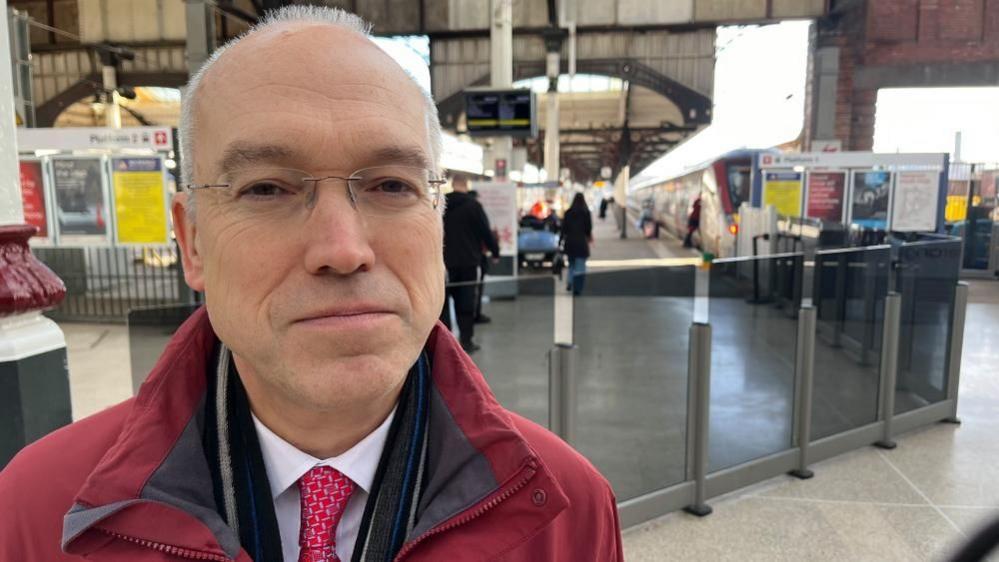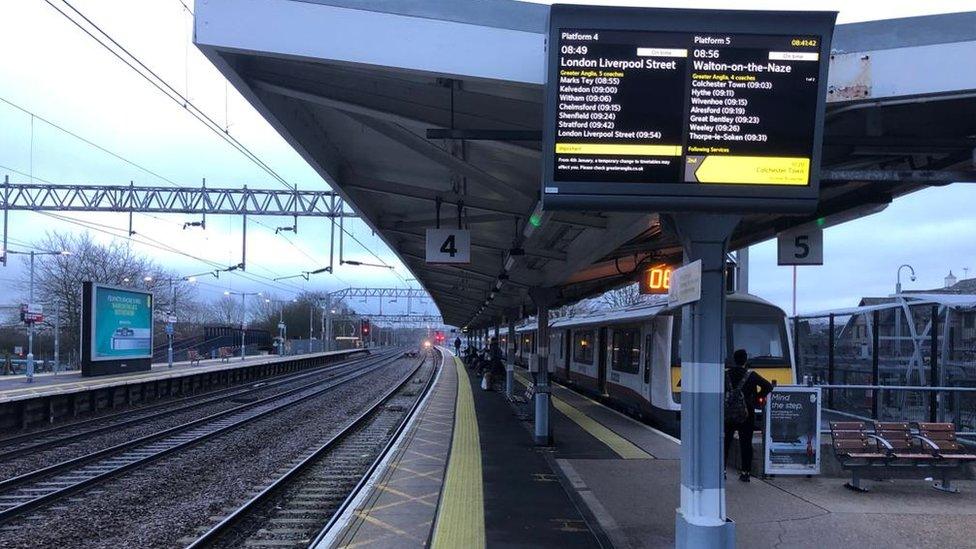Rail boss says growth proves Serpell Report wrong

Jonathan Denby says if the Serpell Report was implemented it would have had a significant impact on East Anglia
- Published
A senior figure in East Anglia's rail network has spoken of his relief that a past proposal to close all but two rail lines in the region did not come to fruition.
The 1982 Serpell Report, which was commissioned by Margaret Thatcher's government, suggested that all lines be closed in the area, except the Great Eastern Mainline from Norwich to London and East Coast Mainline via Peterborough.
The recommendation was never adopted as the government tried to control British Rail's falling revenues and spiralling costs.
Jonathan Denby, the corporate affairs director for the train operator Greater Anglia, said: "I do remember it being really draconian and the most extreme of options with very little left."
Norfolk County Council is currently running a consultation on how rail services in the area should be developed. The Norfolk Rail Prospectus, external closes on Monday.
Mr Denby said: "Of course [the proposal] didn't come to fruition and thank goodness for that, because we've ended up with a thriving network as a result.
"I think we've seen huge benefits for the county because all the lines in Norfolk have been thriving over the past 30 years."
In that period some of Norfolk's rail lines were rationalised with simpler track layouts and signalling, but no passenger routes were closed.
During the five years after the Serpell Report was published, the Norwich to London route was electrified and in the early days of privatisation frequency of the service increased to every 30 minutes.
Where the Norwich to Sheringham line once operated four trains each way on Sundays, all of Norfolk's branch lines now run at least hourly services all year round, with some routes seeing a quadrupling of passenger numbers since the 1990s.

Anglia Railways reinstated a direct train service between Norwich and Cambridge in 2002
Mr Denby said following the restoration of a direct Norwich to Cambridge service in 2002, the service carried 390,000 passengers during its first year.
After beginning with two-carriage trains, the service now runs with four carriages and carries more than one million passengers per year.
Mr Denby added: "I think the opportunities are to look at how we develop rail services as proactively as possible for the future.
"The most obvious options are looking at how you could increase Norwich to Cambridge to a half-hourly frequency, and there is evident demand if you get the service right, people will use it.
"Over time I think we would also look at further journey time improvements on the mainline to London. The new trains have helped us get seven minutes off the time, but infrastructure improvements could speed it up even more."
He said the Bittern Line from Norwich to Sheringham has seen a quadrupling of passenger numbers from 200,000 to 800,000 - claiming that was largely due to better frequency.
He said: "[With] the local lines from Norwich to Sheringham, Lowestoft and Great Yarmouth, what we have seen in the past 20 or 30 years is a more frequent service that has helped increase passenger numbers.
"Looking forward, to reduce carbon further we would need to improve the infrastructure, but if we improve the frequency, more people will use it."
Follow Norfolk news on BBC Sounds, Facebook, external, Instagram, external and X, external.
Related topics
More stories like this
- Published30 September 2024

- Published4 January 2022
